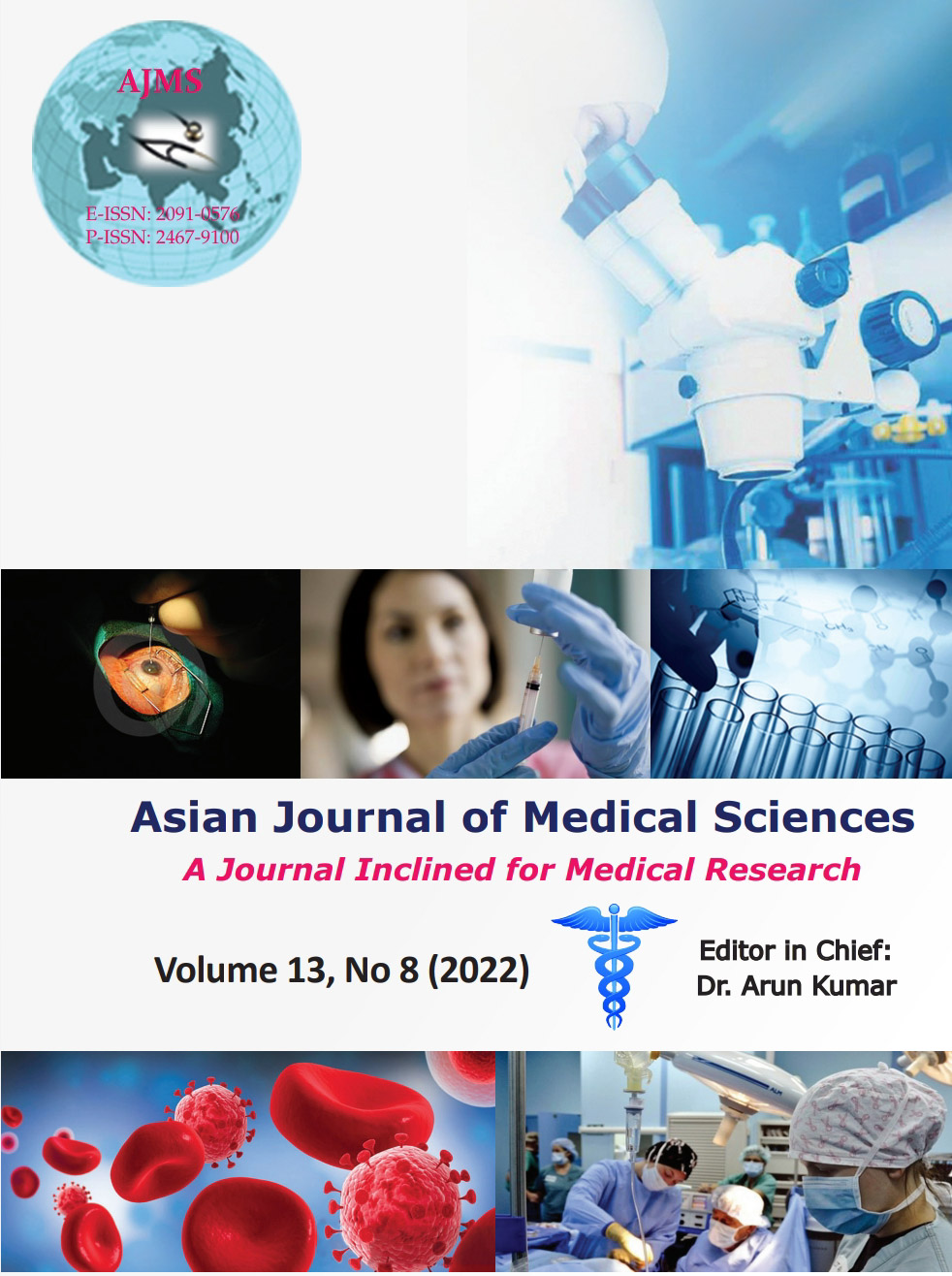Effectiveness of orthopedic metal artifact reduction among patients undergoing computed tomography at a tertiary setting – A cross-sectional study
Keywords:
Coiling; Dental implants; Phantom; Prosthesis; TechniquesAbstract
Background: In computed tomography (CT), metal implants increase the inconsistencies between the measured data and the linear assumption of the radon transform made by the analytic CT reconstruction algorithm.
Aims and Objectives: The aims of this study was to evaluate the effectiveness of orthopedic metal artifact reduction (O-MAR) among patients undergoing CT at a tertiary setting.
Materials and Methods: A cross-sectional observational study was conducted on 30 subjects attending the department of radiology for CT scan for 1 year from December 2018 to 2019. The CT scan was performed in 64 detector row (PHILIPS INGENUITY CORE 128 slice) scanner. The patient was asked for the presence of metallic objects/history of implants, and the topo gram confirms it. Image noise was considered as the primary outcome variable. The statistical analysis was performed using the coGuide software and P<0.005.
Results: All the thirty participants were analyzed finally. Image noise in plain image type was 79.5 SD of Hounsfield units, and in O-MAR image type, it was 44.01 SD of Hounsfield units denoting a higher percentage of SD in plain than O-MAR images.
Conclusion: The O-MAR application helped in improving image quality of CT for patients in the aspect of metal artifact reduction and soft-tissue profile. However, it can also improve diagnostic quality in the evaluation of patients with severe metallic artifacts by decreasing the negative impacts of orthopedic metals.
Downloads
Downloads
Published
How to Cite
Issue
Section
License
Copyright (c) 2022 Asian Journal of Medical Sciences

This work is licensed under a Creative Commons Attribution-NonCommercial 4.0 International License.
Authors who publish with this journal agree to the following terms:
- The journal holds copyright and publishes the work under a Creative Commons CC-BY-NC license that permits use, distribution and reprduction in any medium, provided the original work is properly cited and is not used for commercial purposes. The journal should be recognised as the original publisher of this work.
- Authors are able to enter into separate, additional contractual arrangements for the non-exclusive distribution of the journal's published version of the work (e.g., post it to an institutional repository or publish it in a book), with an acknowledgement of its initial publication in this journal.
- Authors are permitted and encouraged to post their work online (e.g., in institutional repositories or on their website) prior to and during the submission process, as it can lead to productive exchanges, as well as earlier and greater citation of published work (See The Effect of Open Access).




